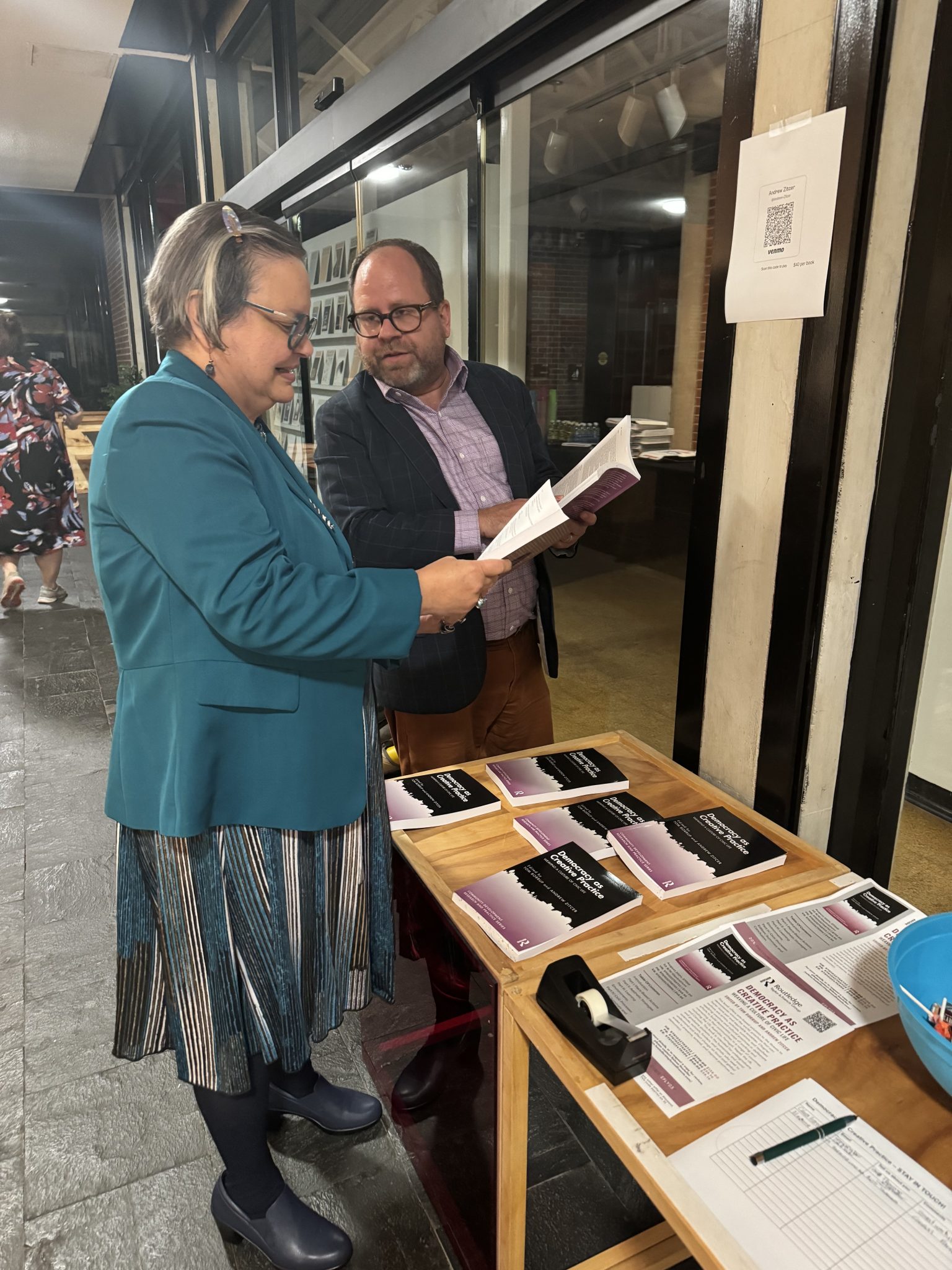By Lena Lajoy
For The Diamondback
Many University of Maryland students and faculty members attended an artist panel Wednesday featuring a discussion on the relationship between democracy and the arts.
During the event, organized by this university’s architecture, planning and preservation school, Andrew Zitcer and other panel members whose works were featured in the book “Democracy as Creative Practice: Weaving a Culture of Civic Life” spoke on the importance of the book, their roles and the overall meaning of the text.
Zitcer, one of the book’s co-editors, said the goal of the book is to show people how democracy can be expressed through art, such as theater, dance, drawing or other creative outlets.
The book, which covers issues including climate resilience, healing from trauma and the housing crisis, is not meant to be the end of the conversation, he said, but instead to allow readers to better understand what is happening in the world and learn how people are creatively making a difference.
[Reproductive rights, democracy top of mind for College Park voters during early voting]
Zitcer said there is more work to be done.
“The book is not the end, it’s the beginning,” he said. “Tonight is a link in a chain.”
After the panelists explained their background, they each briefly discussed their work in the book. They each took different approaches to sharing their work.
Ronit Eisenbach, an architecture professor at this university, explained a project she worked on with this university’s students aimed at engaging students in discussions about democracy and encouraging them to vote.
Eisenbach said she worked with her students to design and create a portable structure covered in stickers that contained information about the voting process. She said it captured students’ attention with decorations and interactive elements like a hopscotch game with facts about voting put near the structure.
Heather McLean, an assistant professor of environmental studies and human geography at Athabasca University in Alberta, Canada, explained how she created a film about a housing crisis occurring in her city, which saw some people living in porta potties.
Lisa Jo Epstein, an award-winning theater director, finished the panel by explaining how she used improvisation to teach people how to better work together and practice patience. She said her goal was to create a form of “resident-driven, arts-and-community-based engagement.”
[UMD students wait more than 5 hours to vote at Stamp Student Union]
Zitcer said the event allowed students to see that change can be made through art and that there is no limit as to how an impact can be made. While each speaker touched on similar topics, they all used different means to prove their points.
Community planning graduate student Nzingha Campbell said she loves to see how different disciplines intersect, such as with the use of art to encourage discussion about democracy.
“We can really just expand community engagement in many different ways that’s much more [engaging], interactive and really excites people,” Campbell said. “I think it’s important for us to try and support each other in our work.”



